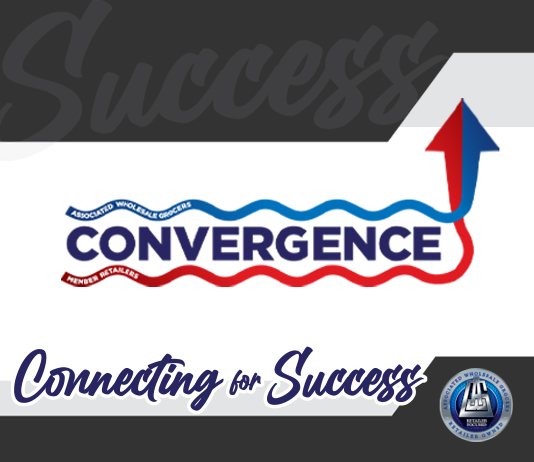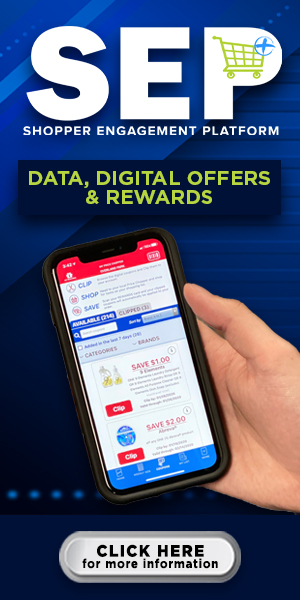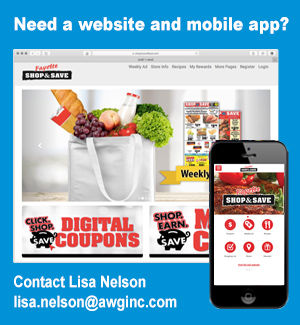
The Convergence journey that AWG embarked on earlier this year continues as we work to implement new programs, services and solutions to collectively work together to deliver on greater outcomes than we can individually achieve.
While the initial priorities of this journey, the annual investments, and member savings targets have been mapped out through the end of 2023, the 2021 focus areas are as follows:
AWG Brands
As our AWG Brands starts to eclipse being a $2.5 billion brand at retail, we continue to look for ways to make the brands more effective, cost-efficient, and ultimately more profitable for our members. Convergence brings the opportunity for us to leverage our size and strength to take AWG Brands to new heights. Looking at AWG’s members as that powerful $22 billion entity, there is strength in being able to leverage private brands like never before. Continuing to close distribution gaps at the shelf, prominence in shelf planograms, consistent combination of EDLC and TPR/Ad activity, and brand/item rationalization are all contributing factors that can give us more cost negotiating power.
AWG has begun an aggressive RFP program with potential private brand suppliers taking our commitment to Convergence and higher volumes to leverage even lower cost of goods. Some of the first categories being pursued are cheese, ice cream, cookies and crackers, and paper products. Even during this very challenging inflationary environment, we are gaining further reductions on our formula costs with manufacturers due to these higher volume commitments and other efficiencies.
While we are utilizing the Convergence philosophy to drive down costs, AWG and a retailer committee of members has been working on the AWG Brands go-to-market strategy. The go-to-market strategy we have utilized in the past has been very successful. As the market changes and becomes more competitive, continued analysis and action around price gap strategies, brand tiering, and brand marketing have become more important than ever. A recent extensive consumer survey just completed with over 3,000 consumers in the AWG trade areas reveals some interesting insights:
• Over 70 percent of customers still compare private brand pricing vs. the national brand as opposed to comparing prices on private brands from one store to another.
• Opening price point brands like Always Save still get very recognized as low price benchmarks in key KVI categories.
• Consumers are looking for private brand alternatives across a broader number of categories more than ever before.
• Nearly 31 percent more consumers surveyed are buying private brand vs. a year ago.
• Nearly 40 percent of consumers surveyed believe that quality on private brands has improved even more.
Assortment
An important piece of the AWG Convergence technology effort is identifying best practices for reporting/analytics in assortment optimization. We will be using business intelligence insights through common standardized reporting and visualizations for category and assortment planning efforts—resulting in what items perform best for any given promotion and season. The goal is to fill in the gaps in reporting and add the needed attributes to help AWG merchandising associates make better and more informed assortment decisions.
In combination with our enhanced CONVERGENCE strategies around AWG Brands, rationalization of item mix across the total offering is equally important. Today almost 76 percent of the items carried in AWG for grocery, frozen, and dairy produce only 10 percent of the sales. That is a staggering number and logic would say that same performance gap translates to our member’s shelves. As a part of the Convergence initiative we have begun looking at item rationalization through new lenses on the business by using syndicated data to an even greater extent to understand what items are working with consumers across the marketplace is essential. Incorporating that analysis with direct local feedback from our division teams and members on essential localized high-demand items is important as well.
The third leg of the stool is working with our vendors in a way that utilizes the strength of the $22 billion in retail sales to leverage resources for those last brands and items standing to higher levels. Currently there are six key categories we are running new rationalization models to come up with rationalized items mixes and leveraged cost of goods improvements. We expect those first initial categories to roll out in the August time frame. From there we will continue the next group of categories in the same fashion that will follow shortly behind. As we look towards the future for 2022 our work plan is to accomplish 10-15 categories for deep-dive renovation. We also plan another 40-50 categories for simple assortment reviews and refresh. This work should also create additional promotional potential for ad groups to capitalize on.
We will also be moving to a new planogram service model rolling out in August that will enhance our ability to provide a richer base of planograms for these categories. In the past we have only produced base planograms by section size for any given category. We will be enhancing our ability to provide planograms with additional recommendations at the market level to more narrow geographies in addition to various section sizes.
Technology
Technology is a key foundation of Convergence. The implementation of a Supplier Information Sharing Portal will set the bar higher for vendor and category manager collaborations. It will drive action to resolve performance concerns with the vendor population, and offer end-to-end traceability on trade funds’ performance at the co-op level. To drive business results, it will:
- Provide visibility to consistent data designed to drive faster insights and exception-based decisions.
- Eliminate duplication of work/streamline the category management and purchasing strategy portion of our supply chain, making it easier to do business with AWG.
- Provide participants with a holistic picture of business performance to capitalize on key opportunities in the local retail market or vendor product set at the co-op level.
- Be integrated (in future phases) into execution systems to drive end-to-end supply chain efficiency.
Technology also plays a large role in the automation of category performance measurements to improve decision support on item selection. The goal is to level up data warehousing and data management capabilities; including curated, cleaned data sets and certified data sources. We will use cloud-based data automation services for data cleansing, extraction, loading, and transformations. Another goal is to expand storage and compute capacity for ingestion of scan-based data. As well as developing hardened security constraints, such as role-based access, anonymized POS data sets and intrusion prevention controls to protect against ransomware attacks.
We look forward to continue working together with you to bring Convergence to life in the coming months and years.







